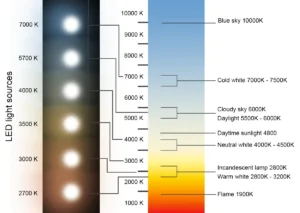How to make the environment more comfortable and adapt it to people, help them adapt and maintain psychological balance?
The article examines this issue from the point of view of architecture and interior design, namely human interaction with color, light, shape and the influence of these factors on it.
The purpose of the study is to determine the methods of organizing interiors and architectural objects for a comfortable and productive human life, accelerating human adaptation to a new environment for him. The study analyzed various projects related to the construction of bases on the Moon and Mars, as well as the existing ISS station.
For example, there is a lot of visual noise at the ISS station (wires, things, equipment). Architectural or interior projects of bases on the Moon or Mars are often very impersonal: one or two neutral colors are used, only white light, the uniformity of residential modules without the possibility of making changes for a certain person, lack of choice.
These aspects negatively affect a person’s adaptation to a new environment and the appearance of a sense of security and “home”.
To make the environment more mobile to a person, it is proposed to use different lighting scenarios: daytime, night, the introduction of other colors. Use light not only to be able to see, but also to simulate various scenarios from the ground: dawn, sunset, twilight, etc. It is also proposed to use movable partitions for the possibility of dividing the space from a large one into a pair of small ones or changing the shape of small rooms, transforming furniture to preserve free space in the premises and organize different scenarios, replaceable decorative elements (such as furniture covers, pillows, paintings, photographs, wall panels), etc.
Special attention should also be paid to the shapes of objects and their color, because they cause different emotions in a person on a non-subconscious level. So, elements with sharp corners, rough shapes over time begin to cause us a feeling of aggression, anger. Smooth shapes, rounded corners give us a sense of peace and tranquility. In the case of flowers, some of them stimulate our brain to work, others to rest, to restore energy, to calm down, etc. It is very important to properly organize the space in which people are, because this affects their existence, and in conditions of limited space and life, these aspects are even more important.
IPOSTERS Presentation for IAC2023 BAKU
The project evolves in 2024!
We are presenting the outcomes on IAC2024 in Milan.
Recent research has advanced the understanding of how lighting plays a pivotal role in human life in space, especially regarding astronaut well-being, performance, and sustainability in extraterrestrial environments.
The “Space for a New Life” project aims to develop adaptable, energy-efficient lighting systems that support both the physiological and psychological needs of astronauts. Below are the key advancements in this research:
- Enhanced Circadian Lighting Systems: The study highlights the development of lighting systems designed to maintain optimal circadian rhythms for astronauts. These systems mimic Earth’s day-night cycle, adjusting light intensity and color temperature to align with natural circadian patterns. This regulation is essential to ensure sleep quality, cognitive function, and overall well-being during long-duration missions.
- Task-Specific Lighting Solutions: Advances in customizable lighting are enabling different station zones—workspaces, sleeping areas, and communal spaces—to have lighting that suits specific activities. For example, cool, high-intensity lighting for focused tasks and warmer, softer lighting for relaxation improves both work performance and psychological comfort.
- Health and Safety Considerations: Lighting systems now focus on minimizing glare and eye strain, which is critical in confined and artificial environments like space stations. By providing adjustable lighting levels, astronauts can work more comfortably and safely in various areas of the habitat.
- Energy-Efficient Technology: The integration of energy-efficient LED lighting reduces power consumption, a critical factor for long-term space missions. Advanced systems with smart control features automatically adjust lighting based on occupancy and task requirements, conserving energy without compromising the astronauts’ needs.
- Psychological and Emotional Well-being: Lighting designs now address not only physical health but also psychological resilience. Exposure to well-regulated light helps alleviate mood disorders, such as seasonal affective disorder (SAD), by promoting the production of serotonin. Customizable personal lighting allows astronauts to maintain emotional balance and improve mental health during extended periods of isolation.
- Modular and Adaptable Systems: The research introduces modular lighting units that can be adjusted for various mission phases, whether short-term exploratory missions or permanent settlements. These adaptable systems can evolve alongside mission requirements, supporting both temporary and permanent human presence in space.
By combining these technological and scientific advancements, SNL initiative is creating lighting environments that not only meet basic operational needs but also promote human sustainability and comfort in space.
These breakthroughs are crucial for future long-term space missions, particularly for planned lunar and Martian habitats.
Presentation IAC 2024
Paper IAC 2024


 Drive
Drive






